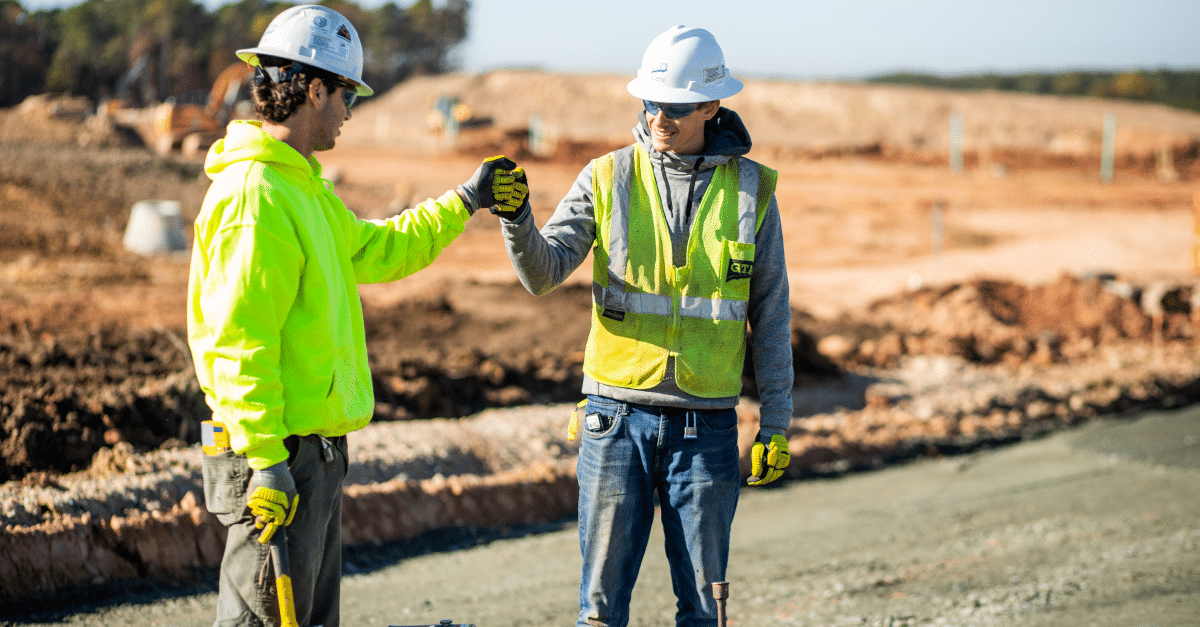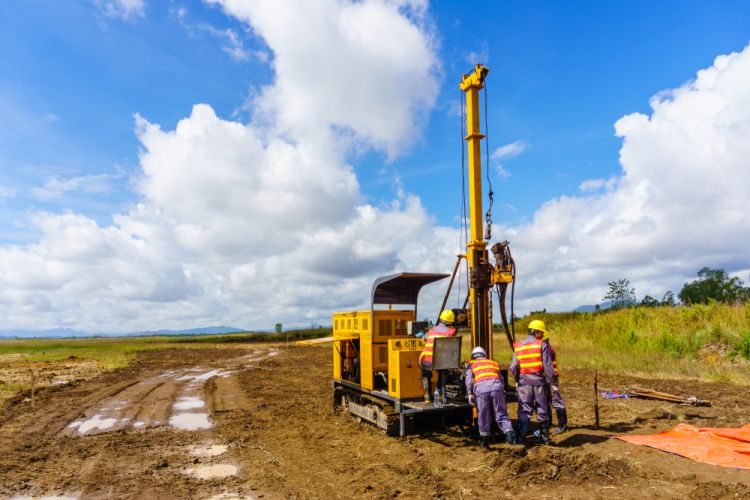The Buzz on Geotechnical Engineering For Construction Projects
What Does Geotechnical Engineering For Construction Projects Do?
Table of ContentsRumored Buzz on Geotechnical Engineering For Construction ProjectsThe Ultimate Guide To Geotechnical Engineering For Construction ProjectsSome Known Incorrect Statements About Geotechnical Engineering For Construction Projects Geotechnical Engineering For Construction Projects Things To Know Before You BuyAn Unbiased View of Geotechnical Engineering For Construction ProjectsFacts About Geotechnical Engineering For Construction Projects Revealed
These attributes have to be analyzed by geotechnical designers to anticipate their movements under various situations., making this analysis necessary.A geotechnical designer will analyze soil to establish the bearing capability of the planet and suggest appropriate structure types, such as superficial foundations, deep structures like stacks, or specialized remedies like floating foundations for soft dirts. Comprehending the functions and actions of soil and rock, in addition to exactly how they engage with constructions that have actually been put up on or within them, is just one of the key explanations for why geotechnical design is important.
Environmental protection is completed with geotechnical design. Expertise in air, water, and soil quality upkeep is placed to make use of by geotechnical engineers to decrease the unfavorable effects of jobs.
Infrastructure growth, offshore design, passage building, and deep foundations. Risk-based layout and multidisciplinary teams. These components will certainly maintain the area progressing and guarantee its ongoing relevance in the years ahead. To sum up, geotechnical engineering is an important self-control that preserves the strength and honesty of civil framework. Geotechnical designers add to making structure jobs effective around the world by recognizing the practices of earth materials and using appropriate preparation strategies.
7 Easy Facts About Geotechnical Engineering For Construction Projects Described
The fundamental security of any type of project is imperative. Geotechnical engineering plays a crucial function in guaranteeing that frameworks are improved solid ground, essentially and figuratively. By analyzing soil, rock, and subsurface conditions, geotechnical designers supply vital understandings that aid in the design, construction, and upkeep of buildings and framework.

The smart Trick of Geotechnical Engineering For Construction Projects That Nobody is Talking About
Lab screening: Figuring out the properties of dirt and rock. Area screening: Carrying out examinations on-site to examine problems. Evaluation and layout: Utilizing data to design structures, preserving wall surfaces, tunnels, and other structures. Several high-profile building projects have actually efficiently used geotechnical design to ensure their stability and safety and security. :: The globe's tallest structure required a deep understanding of the underlying geology.

As a leader in geotechnical design, BECC Inc. is devoted to delivering cutting-edge and reliable solutions that fulfill the highest standards of high quality and safety and security. To learn more on exactly how BECC Inc. can sustain your following construction project, contact us today and let us aid you improve solid ground.
William Rankine, an engineer and physicist, created an alternative to Coulomb's earth pressure theory. Albert Atterberg created the clay uniformity indices that are still made use of today for soil category. In 1885, Osborne Reynolds identified that shearing causes volumetric extension of thick products and contraction of loosened granular products. Modern geotechnical engineering is claimed to have actually started in 1925 with the magazine of Erdbaumechanik by Karl von Terzaghi, a mechanical designer and rock hound.
See This Report about Geotechnical Engineering For Construction Projects
Terzaghi also created the structure for concepts of bearing capability of structures, and the concept for click to find out more prediction of the rate of negotiation of clay layers because of consolidation. Afterwards, Maurice Biot completely developed the three-dimensional soil debt consolidation theory, expanding the one-dimensional design formerly created by Terzaghi to much more general theories and introducing the set of fundamental equations of Poroelasticity.
Geotechnical engineers examine and figure out the homes of subsurface problems and materials.
How Geotechnical Engineering For Construction Projects can Save You Time, Stress, and Money.
Geologic mapping and analysis of geomorphology are generally completed in assessment with a geologist or design geologist. Subsurface exploration typically involves in-situ screening (for instance, the common infiltration examination and cone penetration examination). The digging of examination pits and look at this site trenching (especially for finding faults and slide airplanes) might likewise be used to learn regarding soil conditions at deepness. Still, they are often used to allow a geologist or engineer to be lowered into the borehole for straight aesthetic and hand-operated exam of the dirt and rock stratigraphy. Various soil samplers exist to meet the demands of various engineering tasks. The conventional infiltration examination, which uses a thick-walled split spoon sampler, is one of the most typical means to gather disturbed examples.

If the interface in between the mass and the base of an incline has a complicated geometry, incline stability evaluation is challenging and mathematical option techniques are needed. Generally, the user interface's specific geometry is unknown, and a streamlined user interface geometry is assumed. Finite slopes require three-dimensional versions to be examined, so most slopes are analyzed thinking that they are considerably large and can be stood for by two-dimensional models.
Little Known Questions About Geotechnical Engineering For Construction Projects.
Creating the layout based on a functioning hypothesis click this link of habits anticipated under the most likely problems. Selection of amounts to be observed as building and construction proceeds and computing their anticipated values based on the working theory under the most negative conditions.
Dimension of amounts and evaluation of actual conditions. It is improper for projects whose layout can not be changed throughout building and construction.